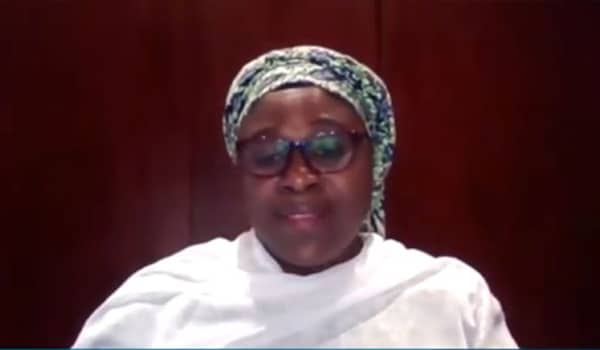
WEBINAR by the Center for Global Development, 3 June 2020
Presentation by: Salma Anas-Kolo, Director/Head, Department of Family Health, Federal Ministry of Health, Nigeria
These are the main points of her presentation: Salma Anas-Kolo describes how Nigeria has been addressing SRH services for women and children since the pandemic began in Nigeria at the end of February 2020. She opens by talking about how the speed of spread of infection in the community frightened people. As a result, women were not accessing services like family planning. Health workers were scared and were not willing to deliver services, or could not get to their workplaces. They were also concerned at the lack of personal protective equipment to protect themselves. Commodities were also running low because of the lockdown. Moreover, health workers were worried, as they didn’t know how to handle patients, whether they had the virus or not. Many people also thought that the only services open were for Covid-19 treatment. So the Ministry communicated with their focal points at state level, and they learned that the number of women attending for antenatal care had dropped and the number attending for delivery at facilities had dropped drastically. The Honourable Minister led a high-level engagement to avoid everything moving backwards. They communicated with the state health commissioners and others who were all asked to communicate with all the institutions involved in health care to assure people that services were open. They wanted to avoid collateral damage apart from Covid-19 in all health areas, including sexual and reproductive health care, especially because services like family planning are provided at all levels of the health service, especially in primary care. There were not enough health workers before the pandemic, she said, and because some health workers had to be diverted to deal with patients with the virus, it meant other services were even more affected. So to increase the health workforce they began first to engage retired nurses and midwives. They also developed a lot of awareness creation activities, as a key component, to let people know services were still there, that they were not closing. For example, that adolescent friendly services were still there… Then they had to ensure that commodities could come into the country and be transported and delivered locally, and special waivers were needed from the Ministry for that. They also began to work on a plan for how services would need to adapt, including for sexual and reproductive health. They were particularly concerned about primary care services, because that is where women, adolescents and children get most of the health care they need. Children do not stop coming, and they are concerned to prevent more unwanted pregnancies, more unsafe abortions, higher maternal mortality and lack of care for the resulting children. They focused also on immunisation services, which were also initially disrupted.



